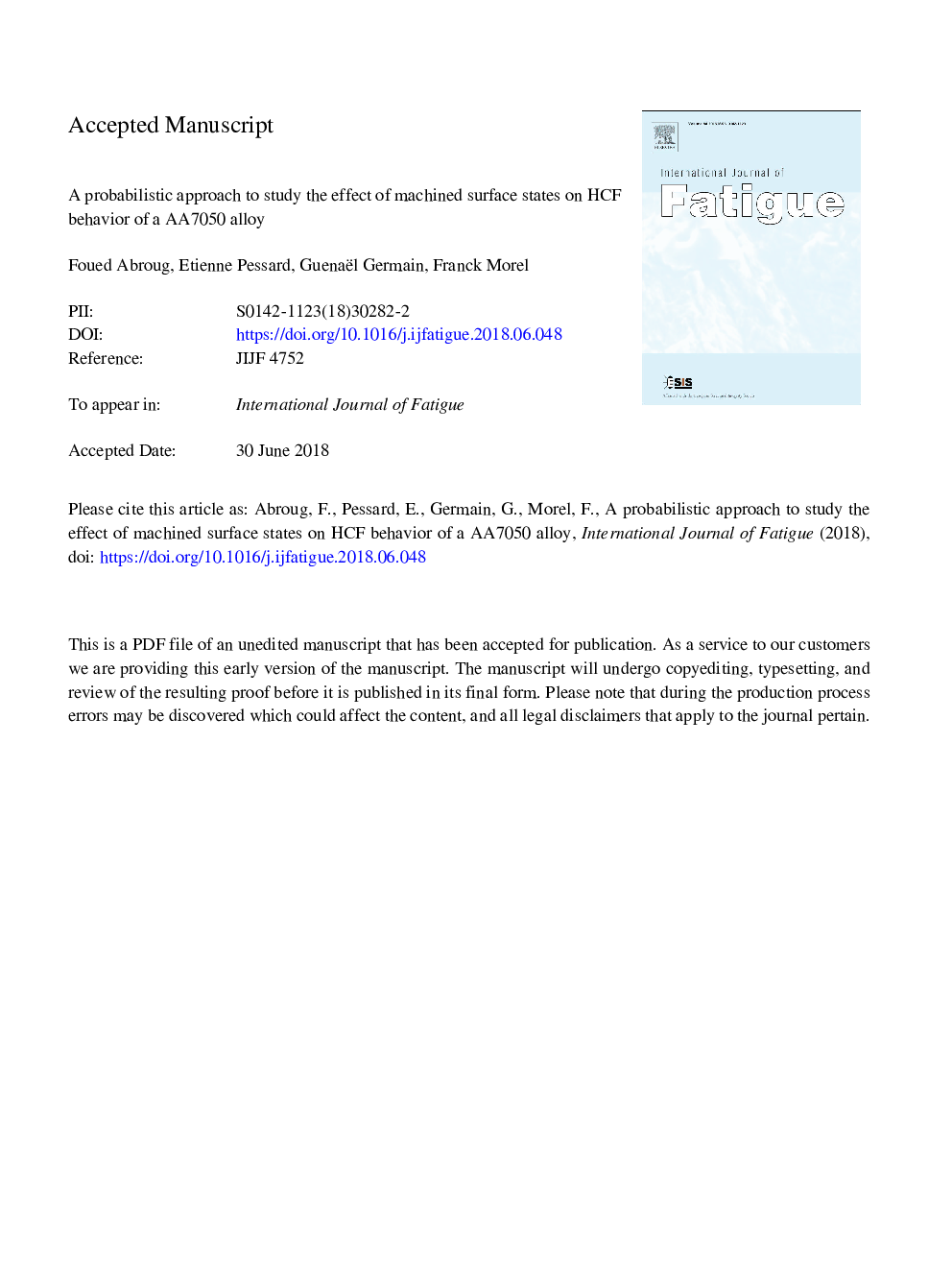| Article ID | Journal | Published Year | Pages | File Type |
|---|---|---|---|---|
| 7171299 | International Journal of Fatigue | 2018 | 42 Pages |
Abstract
The aim of this study is to understand the impact of periodic surface micro-geometry patterns (obtained by High Speed Machining process) on the fatigue behavior of the AA7050 aluminium alloy and to define a proper defect acceptability criterion. It must be able to account for a large range of surface defects and of component sizes and geometries (wings, brackets, frames, etc.). A vast experimental campaign under fully reversed plane bending loads containing different surface states has been undertaken to characterize the effect of the surface topography on the fatigue behavior. The results show that the fatigue strength decreases when the surface roughness is significantly degraded. In order to predict the influence of the surface condition on the fatigue behavior, a numerical approach based on the real surface topology has been developed. It is shown that the numerically identified crack initiation sites are in agreement with the experimental results. A probabilistic approach based on the weakest link concept, associated with the definition of a stress based crack initiation threshold has been integrated in a FE model. This approach leads to a probabilistic diagram inspired from the Kitagawa type diagram, which explains the relationship between the surface and the scale effect on the fatigue strength.
Related Topics
Physical Sciences and Engineering
Engineering
Mechanical Engineering
Authors
Foued Abroug, Etienne Pessard, Guenaël Germain, Franck Morel,
